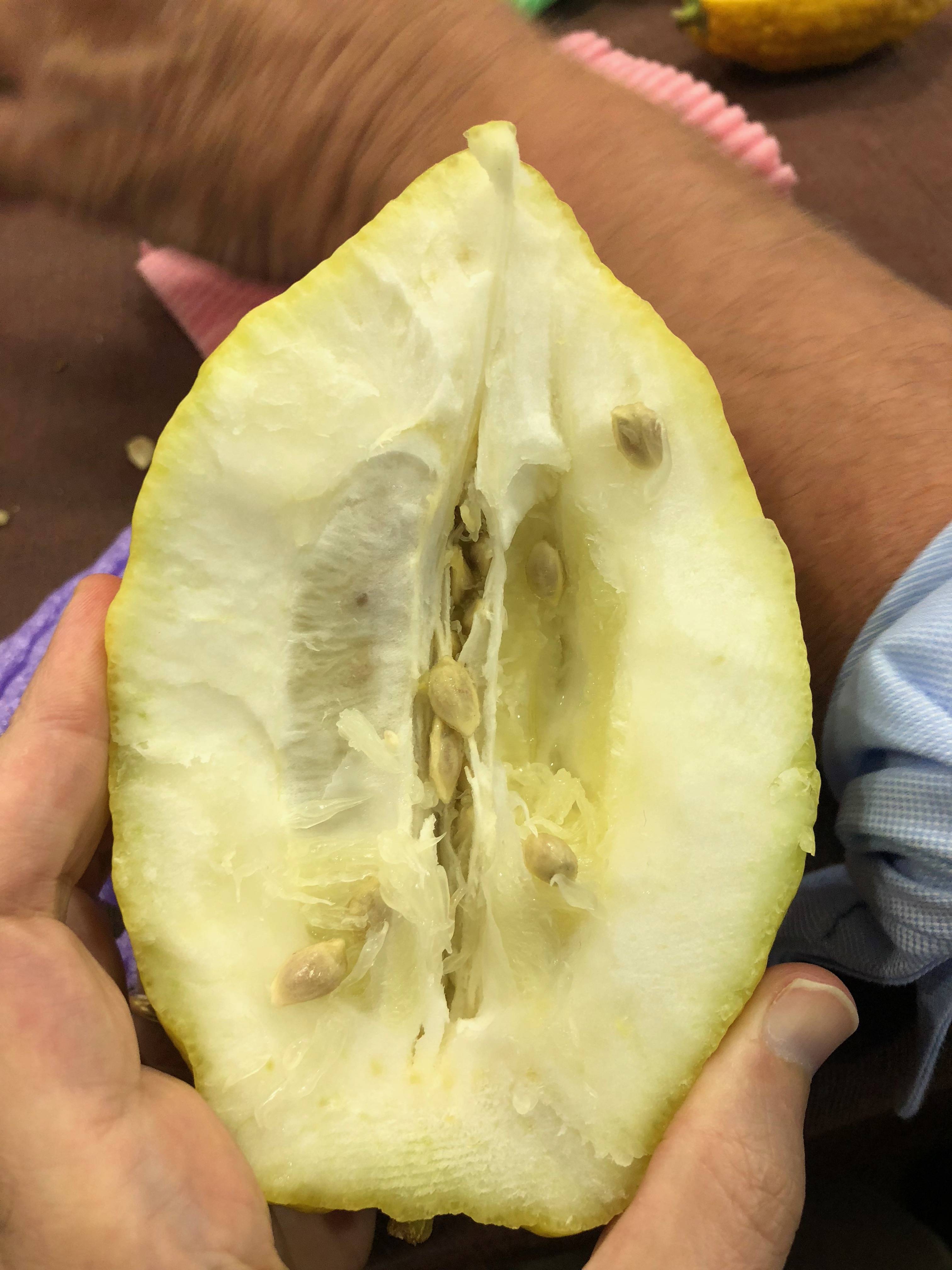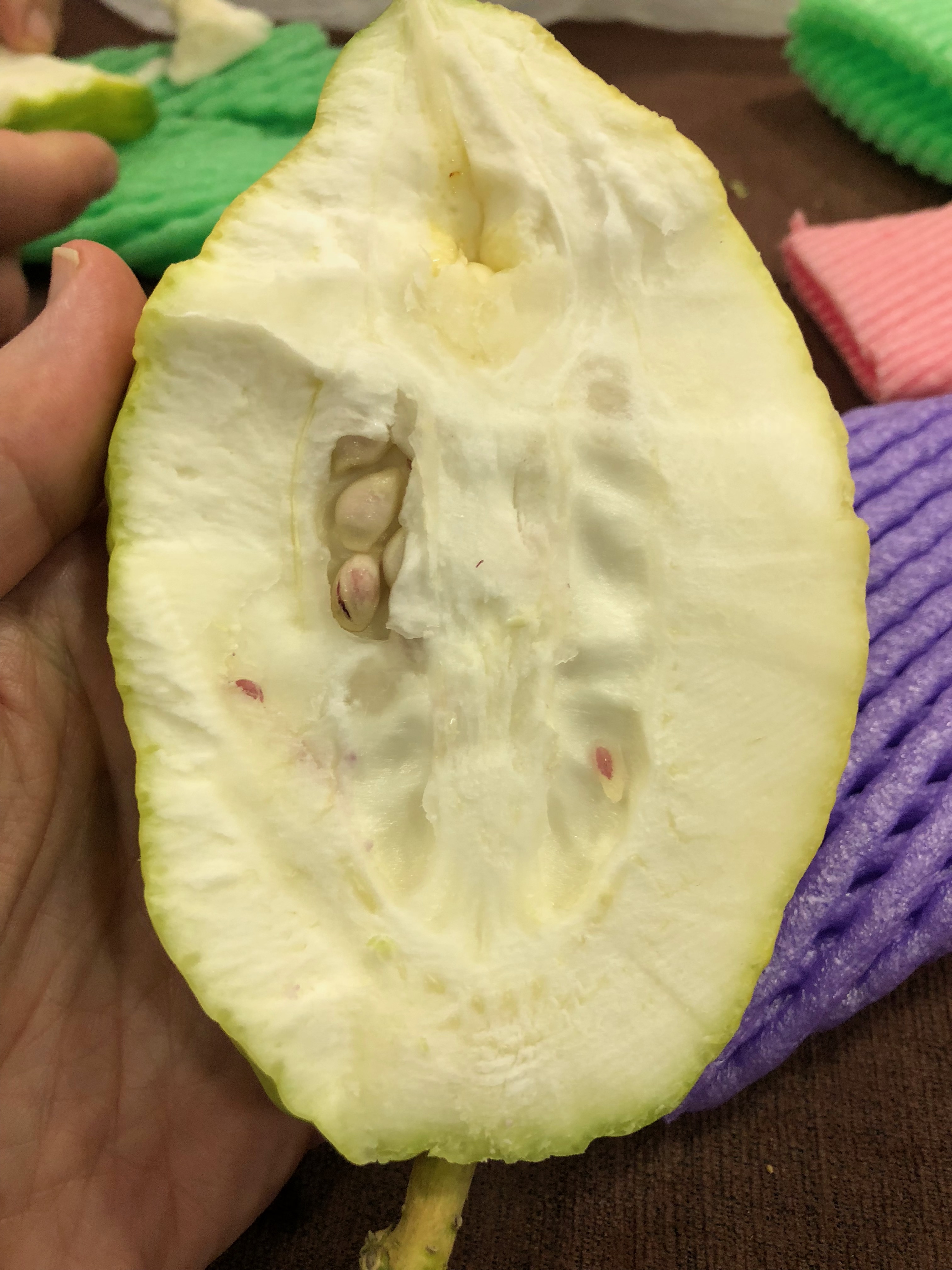The gemara in Sukkah 35a describes one of the characteristics of the etrog as
a tree that the taste of its tree trunk and the taste of its fruit are alike
dinonline expands
The Kapos Temarim (cited by Shut Chasam Sofer, Orach Chaim 207) explains that an esrog is unique in that it has little or no pulp, unlike other edible citrus fruits. The main part of the esrog is therefore its “rind”, which bears a much closer flavor to its bark than does the pulp of any other fruit.
I am aware of at least four common types of etrogim grown today: Moroccan, Hazon Ish, Calabrian and Teimani.
Which of these types of etrogim corresponds to the gemara and Kapos Temarim description?








